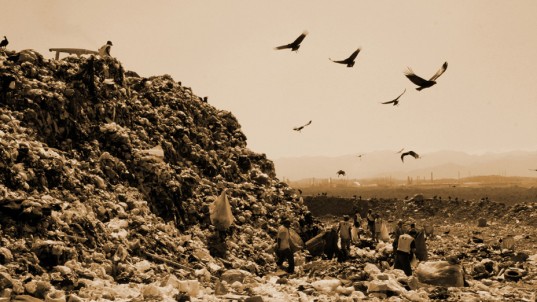
World’s largest open air trash company Rio has decided to close its activities near Seaside Mountain in Guanabara Bay and thousands of people are feared to lose their jobs, following the steps. The company has been providing a source of income to thousands of local people since last 34 years but now they have decided to stay away from the business. The steps are feared to be dangerous as far as its impact on local people and environment are concerned. The company has been fighting against the greenhouse effects.
The environmental experts have been criticizing the business of the company for many years as they are of the view that it has been causing water pollution to the nearby sea life. Meanwhile, some of the people have expressed their deep regret over the decision of Rio de Janeiro dump group. They are of the view that local people were earning their living from the trash and now their future looks quite insecure. The company officials have comforted the local people while saying that they are intending to introduce new system of converting the waste into useful purposes.
Rio de Janeiro which has remained a sign of ill-conceived metropolitan setting up and ecological carelessness, Rio de Janeiro’s Jardim Gramacho dump is being malformed into a vast capability that will tie together the greenhouse gases generated by the decomposing debris and turn them into energy capable of heating homes and powering cars.
It is still unclear that what will happen to more than 1,700 people who have been working at the site, scaling hills of vulture-covered trash to resolve ecological plastic, paper and metal from detritus.
These matadors will be given a lump-sum payment from the city, but there is no place intended for them at Gramacho’s replacement, the hi-tech Seropedica dump, where most of the Marvellous City’s garbage is already being sent.
Lorival Francisco dos Santos, a 46-year-old citizen from Brazil’s insolvent north-east, who has spent 13 years at the landfill said on this occasion that after been here for long, it becomes hard to make a decision of leaving the work at this crucial stage.
Gramacho’s shutting has been delayed more than a few times over the years, and will in conclusion take place just weeks before the UN’s Rio+20 mega conference on sustainable development at the end of this month. It has also come up as the city gears up to host the 2014 Football World Cup and the 2016 Olympics. The authorities will be left with no other option than to have quick steps in the right direction.
Gramacho sprang up on unbalanced, not wastefully responsive quagmire in 1978, and for 20 years, worked with little or no oversight. There was no floor lining to avert toxic leak, and the squalid juices produced by moldy organic material drained directly into the bay, making much of it unsafe.
In 1996, Rio authorities took right steps and ended the child labor at the site, and registered the matadors carefully.

